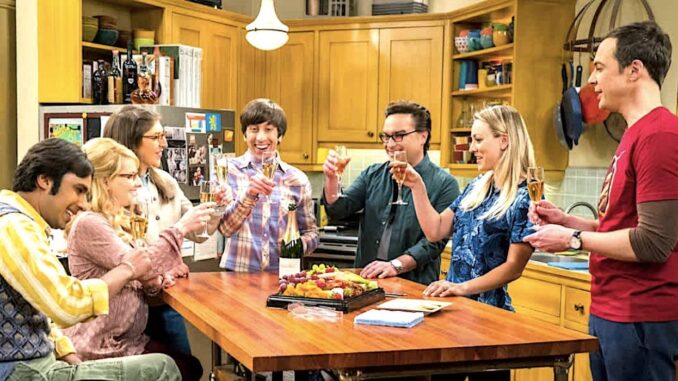
If you’ve been a fan of The Big Bang Theory, you know it’s packed with brilliant humor, geek culture, and endearing characters. But what if I told you the show quietly revealed its biggest weakness years ago — and most fans never caught it? Thirteen years after the series first aired, it’s time to uncover the subtle cracks that were there all along. Let’s dive in.
What Made The Big Bang Theory a TV Sensation?
Before we get to the weak link, let’s appreciate why The Big Bang Theory became a massive hit. Its unique blend of smart humor, relatable characters, and geek culture references created a worldwide fanbase.
-
Relatable Characters: From Sheldon’s quirks to Penny’s down-to-earth vibe, each character resonated with audiences.
-
Clever Writing: The witty dialogue and scientific jokes made it stand out from other sitcoms.
-
Cultural Phenomenon: It turned nerdiness into mainstream cool, influencing how society views geeks and scientists.
With all this going for it, the show seemed almost perfect — but even diamonds have flaws.
The Secret Weakest Link: Character Development Imbalance
After watching the show through all 12 seasons, one glaring issue becomes clear: the uneven character development.
While some characters received deep, meaningful growth — like Sheldon and Amy’s evolving relationship or Leonard and Penny’s ups and downs — others, surprisingly, stayed stuck in repetitive patterns.
Why Character Growth Matters in Long-Running Shows
Long-running TV shows live or die by how their characters grow. Audiences invest in the journeys, struggles, and transformations. Without change, characters risk becoming flat or predictable.
The Big Bang Theory did this brilliantly for a few leads but stumbled with others. And that’s where the “weakest link” quietly lurked.
Howard Wolowitz: The Overlooked Stagnation
Let’s focus on Howard Wolowitz. Introduced as the quirky engineer with a bigger-than-life personality, Howard’s character arc hit a plateau early on.
-
Initially, he was the show’s comic relief — awkward, cocky, and borderline creepy.
-
Post-marriage, he evolved a bit but largely remained the same funny guy stuck in a comfort zone.
His development was limited compared to others, making him arguably the weakest link in terms of growth.
Raj Koothrappali’s Slow Evolution

Raj’s character also displayed slow progression, especially in his romantic life. Early seasons saw him struggle with selective mutism around women, which was a funny quirk.
But for years, Raj remained single and isolated, with little new dimension added to his character. It took a long time for the writers to give him meaningful relationships or personal growth.
Contrast That With Sheldon and Amy
Sheldon Cooper’s growth was a masterclass in character evolution: from a socially clueless genius to a Nobel Prize winner and devoted husband. Amy Farrah Fowler’s transformation from a side character to a lead role also showcased excellent development.
This contrast highlights the imbalance and exposes where the show’s weakest link lies — uneven focus on character arcs.
Why Did This Happen?
Several reasons might explain this:
-
Focus on Fan Favorites: Writers may have prioritized characters with the most fan traction.
-
Actor Availability and Chemistry: Some storylines naturally evolved based on off-screen dynamics.
-
Sitcom Format Constraints: Balancing comedy and drama for seven main characters is challenging.
Whatever the reasons, the impact was a less satisfying journey for certain characters.
Impact on Audience Engagement
When some characters stall in development, audiences may lose interest or feel disconnected. While the show remained popular, fan forums and reviews occasionally pointed out frustration with Howard and Raj’s slow or repetitive arcs.
In today’s binge-watching world, where deep storylines matter, this could have affected the show’s long-term legacy.
Subtle Clues Hidden in Early Seasons
Looking back, you can spot moments that hinted at these weaknesses. For example, Howard’s character often relied on his mother jokes and gimmicks, which didn’t mature much over time.
Raj’s selective mutism joke, funny at first, grew stale and repetitive without sufficient evolution.
The Writers’ Balancing Act
Creating balance in a multi-character sitcom is a tightrope walk. The writers managed to juggle humor, character arcs, and evolving plots — but even the best can’t please everyone.
Still, acknowledging the “weakest link” shines a light on the complexity of crafting a beloved but imperfect show.
How the Weak Link Could Have Been Addressed
-
Deeper Backstories: Developing Howard and Raj’s backgrounds more thoroughly.
-
New Challenges: Introducing new arcs beyond romantic struggles or family jokes.
-
Character Growth Milestones: Giving them defining moments like Sheldon’s Nobel win.
Had these steps been taken, the show’s narrative might have been even richer.
Fan Theories and Critiques Over the Years
Fans have long debated who was the weakest link on message boards and social media. Many agreed on Howard or Raj due to stagnant storylines.
Some suggested spin-offs or special episodes focusing on these characters could have fixed the imbalance.
How Spin-Offs Like “Young Sheldon” Handled Character Focus
Young Sheldon takes a different approach, honing in on one character and deeply exploring his world. This single-focus format allows richer character development, showing what The Big Bang Theory lacked for some characters.
Lessons for Future Sitcoms
The show’s subtle weakest link offers valuable lessons:
-
Don’t neglect secondary characters.
-
Balance humor with growth.
-
Listen to audience feedback over time.
New shows can learn from The Big Bang Theory’s successes and flaws.
Why Fans Still Love The Big Bang Theory Despite Its Flaws
Even with the weak link, the show remains a fan favorite because of its charm, humor, and heart. No sitcom is perfect, and The Big Bang Theory excelled at bringing joy to millions.
Conclusion: The Secret That Makes The Big Bang Theory Relatable
The exposed weakest link doesn’t tarnish the show’s legacy — it humanizes it. Like all great stories, there are imperfections beneath the surface, and that’s okay.
After all, what’s a friendship without a few bumps? And in the end, that’s what The Big Bang Theory was about — imperfect people finding connection and laughter.
